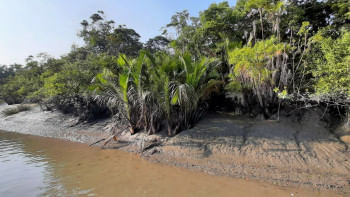The mangroves are there for a reason

Mangroves have always been like a mother to Bangladesh, protecting it from the periodic onslaught of natural calamities in the coast. One may recall the role played by the Sundarbans during cyclones like Sidr, Aila, and Bulbul. Even though these tropical cyclones caused significant damage to both lives and properties in the southwest, extensive devastation was prevented largely because the Sundarbans acted as a natural shield against them. With climate change increasing the likelihood of calamities, such mangroves have become extremely important. The question is, why are we destroying them then?
According to a report by this daily, far from doubling down on initiatives to save our mangroves or reforest battered coastal areas with trees, the authorities are allowing them to be ravaged under various pretexts. In Chattogram and Cox's Bazar, for example, the government has reportedly leased out around 41,000 acres of mangrove forests over the last decade to establish economic zones, tourism parks, and energy structures. Besides, in Moheshkhali and Chakaria upazilas, around 12,500 acres of mangroves were grabbed by politically influential people for shrimp farming. However, the amount of forestland grabbed is higher than what's shown in official data as encroachment continued unabated over the last two decades.
The account of how an entire forest known as "Chakaria Sundarbans" was wiped out from the south-eastern landscape – following a policy of promoting shrimp farming – makes for depressing reading. Equally depressing is the fact that the government built the Mirsarai Economic Zone over an area of 30,000 acres of mangroves, felling 5.2 million trees. More trees had to be felled for the eco-tourism park on Sonadia island. We can go on and on about how such destruction, with official seals or without, for public purposes or private, has been commonplace across the coastline. In districts bordering the Sundarbans, forest clearance is routinely heard of. In fact, forests are being ravaged everywhere. If you ask the relevant department, they will cite lack of resources to justify their failure to stop it. But what about official encroachment or destruction?
Who will stop government agencies from going back on the government's own commitment to end deforestation – and increase forestland by 25 percent – by 2030? We must stop this trend. As climate change continues to heighten risks for Bangladesh, we must take bold action against any attempt to destroy our trees and forests, including the mangroves protecting the coast.


 For all latest news, follow The Daily Star's Google News channel.
For all latest news, follow The Daily Star's Google News channel. 








Comments